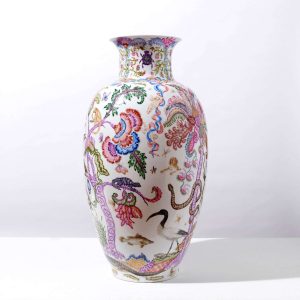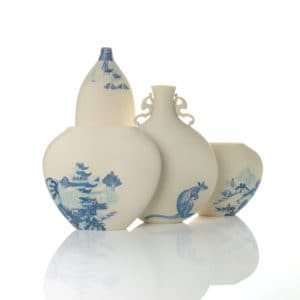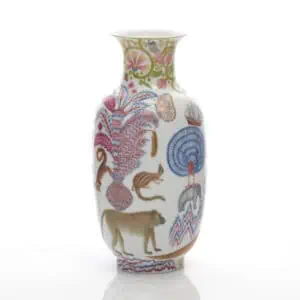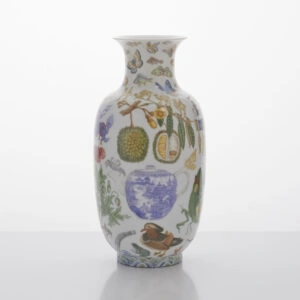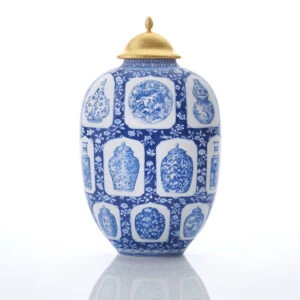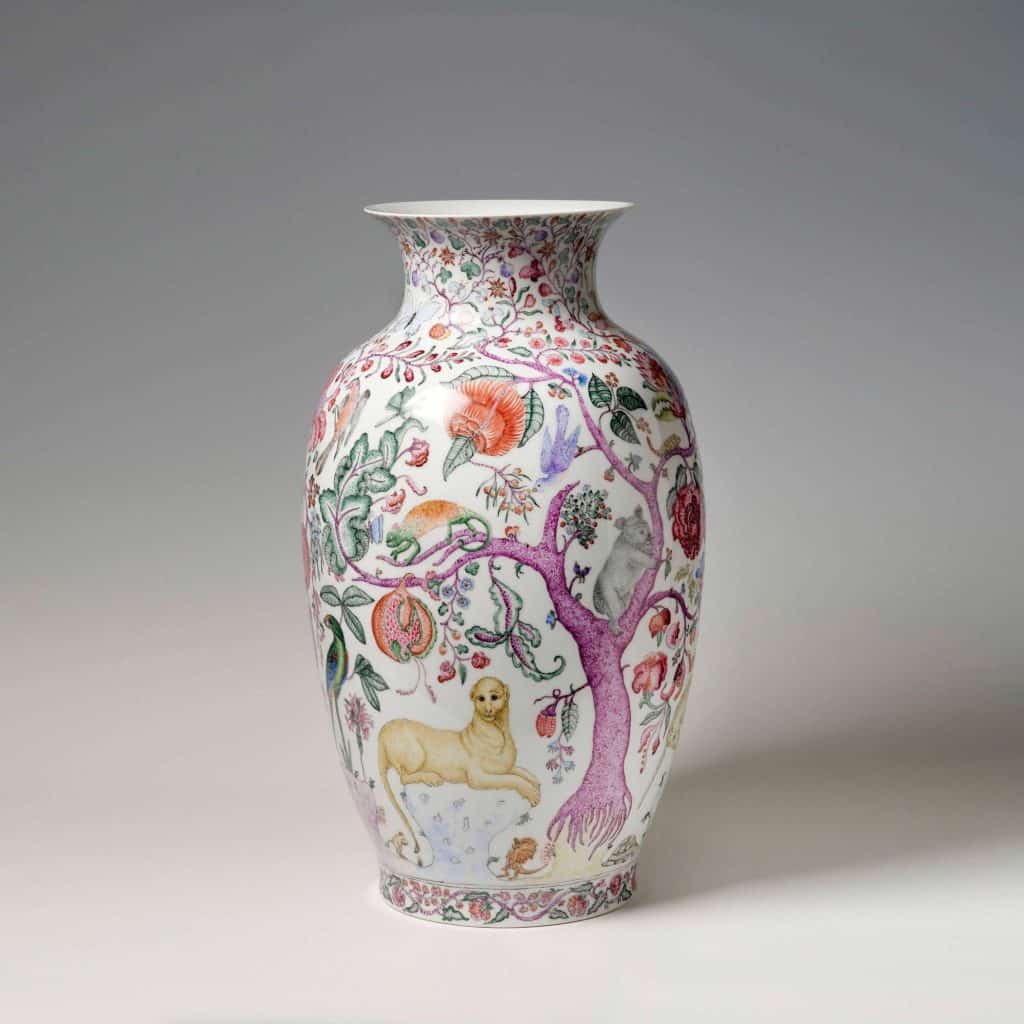
More about The Lion and Unicorn Vase, 2012
The story of The Lion and The Unicorn Vase is sourced from an ancient fable where the lion hides behind a tree to deceive the unicorn. The unicorn’s horn becomes stuck in the tree in the action of charging the lion. Mention of this is made in Shakespeare’s ‘Julius Caesar’ where ‘unicorns may be betray’d by trees’. This image of the Lion and the Unicorn is from ‘Hunt of the Unicorn’ tapestry, Stirling Castle, Scotland 1495-1505.Although Queen Elizabeth created The East India Company by royal decree in 1600 it is the trading period of the late 18th and early 19th centuries that interest me here. During this period John Reeves in China and Wellesley in India commissioned Indian and Chinese artists to record the exotic animals that were traded through their ports. These fine renderings that were not anatomically correct became known as ‘The Company Style’. This was also the time that voyages of discovery were sent to map the coastlines and record the flora and fauna of South East Asia and Australia.
Above the heraldic imagery of lion and the unicorn which stand on Chinese scholar rocks on either side of Tree of Heaven and in this case a Eucalypt first planted in India near Bangalore in the late 18th century, is the ‘The Kaolo’ and is taken from the first published image of a Koala namely George Perry’s ‘Arcana’. The Chameleon from the Thomas Hardwicke Collection and the Port Lincoln parrot by Ferdinand Bauer, a naturalist on Flinder’s ship ‘Investigator’ are also to be found.
On the reverse side is the heraldic if somewhat comical imagery of actually existing Australian animals – the drawing of the kangaroo is by Watling a convict with the First Fleet and the source of the image of the emu is from a similar time – late 18th century; the Bengal Slow Loris is from the John Reeves Collection: the ring-tailed possum and the fruit bat are from the John Macleay collection (stuffed); the swift parrot is taken from a drawing by George Draper as is the Grass Tree.
The uppermost branches of the Eucalypts become the tendrils of the Red Passion Flower that wrap themselves around the neck of the vase while at the base a collection of Australian animals can been seen in amongst the Chinese scholar rocks – the frill-necked lizard, tortoise, hopping mouse, echidna, thorny devil and all other birds, insects and plants have been imagined.

